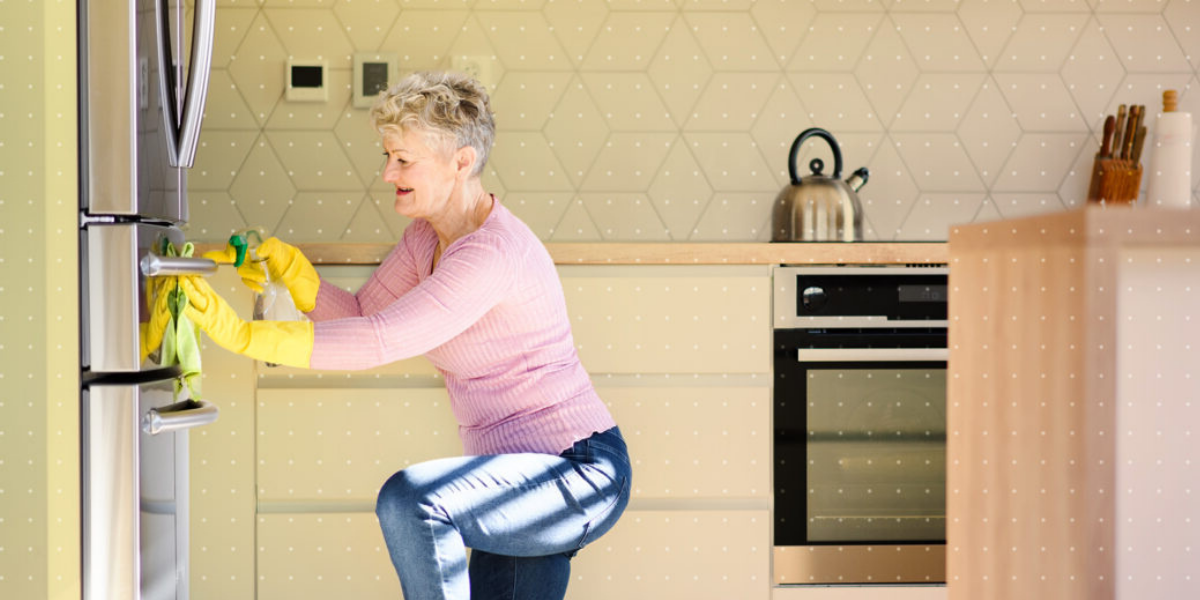If you are to be asked about the dirtiest area in your home, the first ones to come to your mind are probably the toilet seat, the kitchen sink, and the floor.
But did you know that aside from these high-touched surface areas, there are still a number of items that you didn’t think could be the germiest of them all?
Today, get lucky as we show you 13 of the germ-ridden stuff around your house, plus some useful tips on how to keep them sanitised:
IN THE KITCHEN:
1. Countertops
We put anything on our kitchen counters, from raw meat and soiled sponges to shopping bags that have been on filthy floors, all of which contain a variety of germs. In a research by independent public health and safety organisation NSF International, coliform bacteria were found on kitchen worktops in 30% of the households tested.
Cleaning natural solid surfaces like this with washing up solutions and hot water is the best way to keep bacteria at bay.
2. Water Dispenser
Bacteria thrive anywhere water gathers, and your refrigerator’s water dispenser is a great example, with an added risk of several ‘germy’ hands contacting it repeatedly.
Helpful Hack: Spray the push button with antibacterial spray and wash its outside parts with warm soapy water. Shut off the water supply and flush it with white vinegar to clean the interior. Before using it, properly rinse it and clean any nozzles with a toothbrush.
3. Coffee Maker
What could be better than a cup of freshly made coffee? Well, you might want to reconsider your fix because the interior of these dark, damp machines is a breeding ground. You don’t want some brewed bacteria, do you?
Helpful Hack: Add four cups of undiluted vinegar to the reservoir of your coffee maker to keep it clean. Let it sit for 30 minutes before running it through the machine. After that, run three clean water cycles.
4. Spatulas
Spatulas, particularly the rubber ones, have lots of nooks and holes where E. coli might lurk. Metal models are superior in general since they are less susceptible to bacteria.
Helpful Hack: E. coli, yeast, and mould are not the ingredients you want in your food.
If your spatula is made up of two pieces, make sure you wash them separately.
5. Water Bottles and Tumblers
Germs will breed in high-risk areas of your drinking container such as the bottleneck, rim, and any areas where you pick it up.
Helpful Hack: Reusable water bottles are a terrific way to reduce single-use plastic in the house but don’t forget to wash them in hot, soapy water after each use.
6. Fruit Bowls
Before they reach your basket, fruits have travelled longer than you think. Fruit requires several hands, as well as dirt, dung, and chemicals, to grow, harvest, and transport.
Helpful Hack: Just as you should not consume fruit without first washing it, you should likewise clean your fruit dish before adding to it. If it’s safe to do so, the steam from the dishwasher will eliminate most germs. If not, clean it with dish soap and hot water, then let it air dry on a rack.
7. Chopping Boards
Chopping boards are used every day for food prep and can be laden with germs from raw meat and fish, so it’s easy for them to collect bacteria. If you only have one chopping board, ditch this bad home habit and invest in multiple, colour-coded boards to avoid cross-contamination.
Helpful Hack: For a wooden board that’s likely to harbour more germs, white vinegar is a great cleaning tool. Simply apply with a clean cloth to disinfect and eliminate any odours.
8. Kitchen Sponge
Soft yet filled with hard to kill germs. The kitchen sponge, which you use to wipe dishes and surfaces, is shockingly the germiest spot in your house. With coliform bacteria found on 75% of sponges examined by NSF International, it’s simple to let them become a breeding ground for pathogens.
Helpful Hack: Clean your sponge every day and replace it every couple of weeks to avoid germs growth. Microfiber cloths are a healthier option that can be washed after each usage.
IN THE BATHROOM:
9. Shower Curtains
Shower curtains, which are almost always moist, are a perfect breeding ground for mould, a severe hidden threat in your house. SafeHome discovered that your shower curtain can store up to 60 times more germs than your toilet seat in research.
Helpful Hack: After bathing, spray your shower curtain with distilled white vinegar to help eliminate any mould or mildew that has started to grow and keep it as clean as possible.
10. Toothbrush Stands
The toothbrush holder, not the toilet, is the dirtiest spot in your bathroom, according to NSF International. They are frequently put near the toilet and catch germs from flushes as well as bacteria from the toothbrush.
Helpful Hack: Once a week, give your toothbrush holder a thorough cleaning by either placing it in the dishwasher or rinsing it in soapy water.
11. Bathroom faucets
The bathroom taps don’t have a chance against germs since you touch them after using the restroom and then again after cleaning your hands, transmitting germs back and forth.
Helpful Hack: Clean them every day with a disinfectant wipe or spray to keep the remaining bacteria at bay.
IN THE BEDROOM:
12. Remote Controls
Everyone who uses the TV probably have touched, pressed the keys, and dropped the remote. While most people forget to clean their remote controls, they are bacteria hotspots since everyone in the family uses them, even when they are sick.
Helpful Hack: Wipe them down periodically with 60% alcohol wipes to keep dangerous microorganisms at bay and help halt the spread of germs.
13. Bed Sheets
Just one night of blissful sleep may leave dead skin cells, bacteria, and many other unpleasant particles and germs behind, thanks to any perspiration, grime, or cosmetics left on your skin when you go into bed.
Helpful Hack!
To keep your bed free of bacteria, wash your sheets once a week at 60 degrees. Washing your bedding at a high temperature can also help eliminate dust mites.
Here’s a fascinating fact: when given the right nutrients and environment, bacteria and viruses may multiply every 4 to 20 minutes. This is one of the reasons why sickness symptoms might appear suddenly – which makes ‘cleaning’ a great way to promote good health and hygiene.
Dirt and bacteria may be found in even the cleanest looking homes. However, it’s not just about finding them; it’s about killing them in a method that’s both safe and effective.

